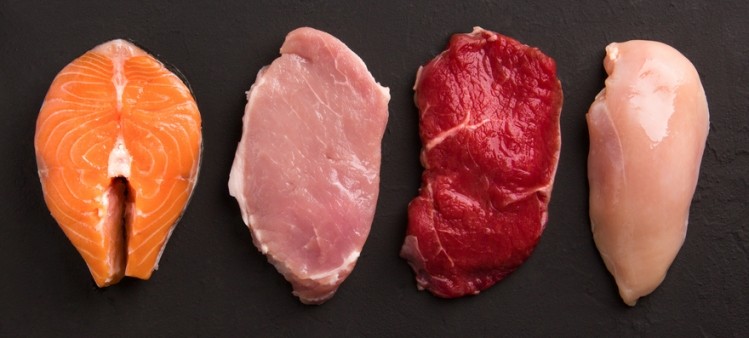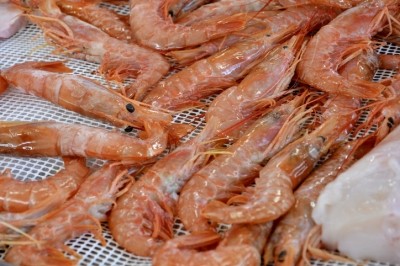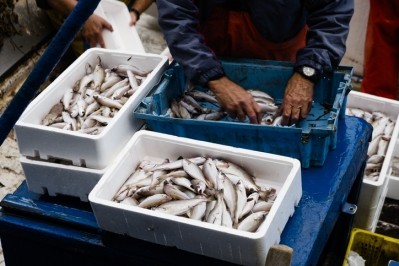COVID-19 virus can survive on chilled and frozen salmon, chicken and pork for three weeks: Study

In this preliminary report, researchers from Singapore and Ireland said this laboratory work has shown that the SARS-CoV-2 can survive the time and temperatures associated with transportation and storage conditions in the international food trade.
Recently, there have been several reports of contaminated foodstuffs in the global supply chain, with China reporting SARS-CoV-2 detected on imported frozen chicken and frozen shrimp packaging material.
This ‘non-traditional’ transmission mechanism is currently being debated, but it is believed that contaminated persons can spread the virus on surfaces.
In one study by Van Doremalen et al (2020), SARS-CoV-2 was found after four hours on copper surfaces, 24 hours on cardboard and after three days on stainless steel and plastic surfaces at 21 to 23°C.
Researchers highlighted of this current study: “(This) should alert food safety competent authorities and the food industry of a ‘new normal’ environment where this virus is posing a non-traditional food safety risk.”
The study was published in bioRxiv, a preprint server for biology research, and has not been peer-reviewed.
Meat samples
Chicken, pork and salmon were purchased from supermarkets in Singapore and sliced into 500mm3 cubes. Each cube was inoculated with 200 µl of 3 x 106 TCID50/ml SARS-CoV-2.
The samples were stored at three different temperatures, 4˚C, –20˚C and –80˚C and harvested at different time points (1, 2, 5, 7, 14 and 21 days).
Infectivity was maintained for three weeks in both the refrigerated (4°C) and frozen (–20°C and –80°C) samples.
Contamination via supply chain
The WHO has advised that it was very unlikely for people to contract COVID-19 from food or food packaging.
While transmission via contaminated food is not a major infection route, researchers in this current study insist it was important to understand the risk of an item being contaminated at the time of export, transport and storage, in case there was a potential for the movement of contaminated items to a region without COVID-19 and initiating an outbreak.
Indeed, there had been recent outbreaks in Vietnam, New Zealand, and some parts of China where there had been no cases for several months. Researchers said the importation of contaminated food and food packaging is a feasible source for such outbreaks and a source of clusters within existing outbreaks.
Researchers wrote: “We believe it is possible that contaminated imported food can transfer virus to workers as well as the environment.”
A Beijing wholesale food market event has led to concerns that imported contaminated food could seed new clusters especially after SARS-CoV-2 was detected in workers and a cutting board used to slice imported salmon.
A mass-swabbing campaign was then implemented for workers at the market, the broader Beijing food chain and residents, which revealed 335 COVID-19 cases.
Elsewhere, meat and seafood processing facilities were shut in UK, Portugal, Ghana, Australia and Germany following outbreaks of COVID-19 among workers, in crowded and poorly ventilated conditions.
“Environmental contamination at the work site is likely to be prolonged due to low temperatures, metal surfaces and lack of UV light.”
On the other hand, salmon processing is minimally handled by workers as it is mostly automated with filleting and cutting performed by machines. However, researchers said if the processing was carried out manually in crowded conditions, the risk of contamination increases.
Researchers said the survival of virus in contaminated food may also be likely during transport and storage.
Starting point
They said efforts to avert the risk of COVID-19 outbreaks seeded by contaminated food must begin at food processing premises.
“These include frequent hand washing, cleaning of food contact surfaces, materials and utensils. PPE usage needs to be overseen and social distancing in and out of the workplace needs to be supported.”
On the receiving end of the supply chain, while food cannot be decontaminated, researchers advised consumers to wash their hands after touching uncooked products, ensure that food is well cooked and regularly cleaning surfaces and utensils.
Source: bioRxiv
https://doi.org/10.1101/2020.08.17.255166
“Seeding of outbreaks of COVID-19 by contaminated fresh and frozen food”
Authors: Dale Fisher, et al.

















